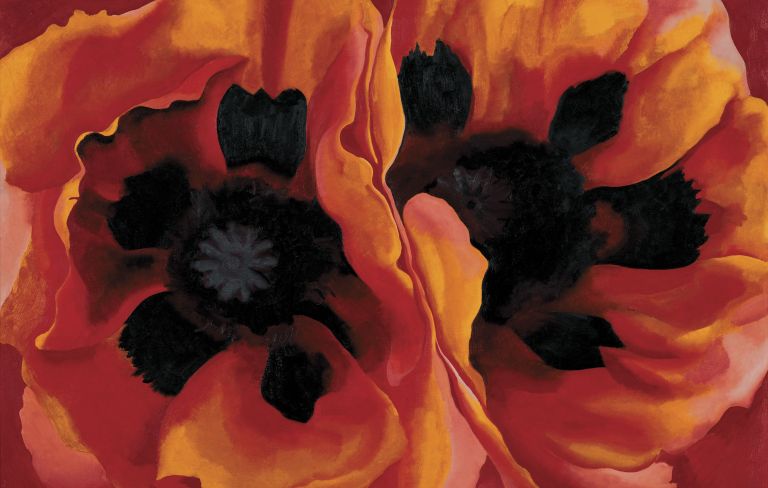The Pavillon Le Corbusier in Zurich is showing an exhibition on Le Corbusier’s world-famous “Modulor” proportion system until 26 November 2023. The connection between human scale and the golden section can also be experienced in the pavilion itself, which was also integrally designed with the Modulor. Le Corbusier thus left his mark on an entire era of architecture and design, with an impact that continues into modern times.
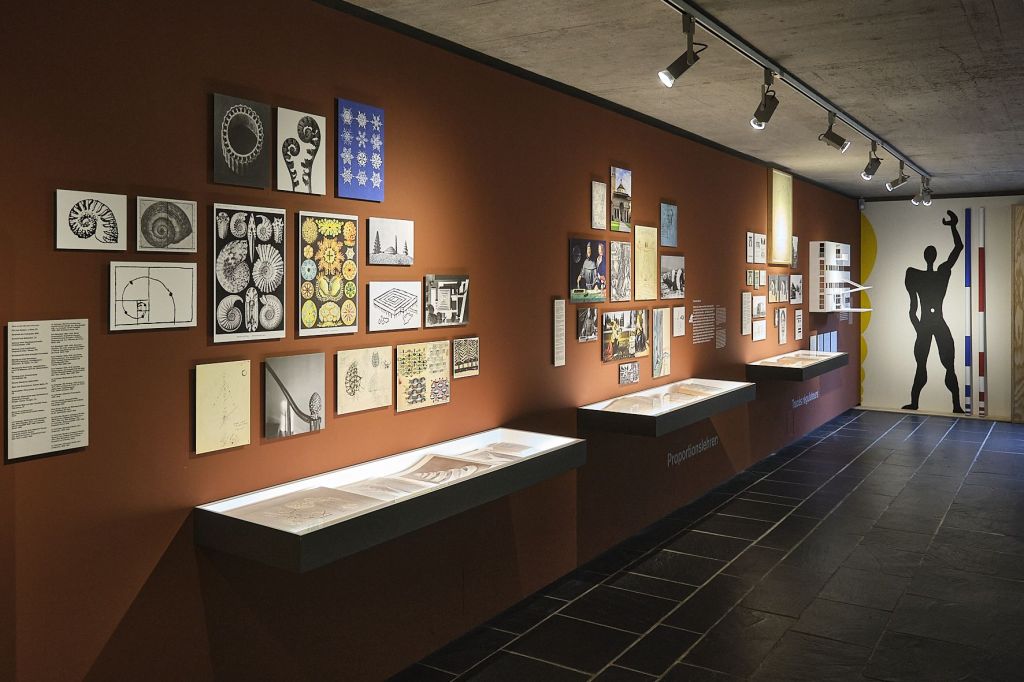
The exhibition shows the history of the Modulor’s development over time and in the form of numerous realisations. Picture: © Werner Mäder, Uetikon
Modernism teaches us that “form follows function”: houses and objects are to be developed solely on the basis of the task. It is therefore all the more astonishing that Le Corbusier (1887-1965), of all people, a standard-bearer of the avant-garde, spent his life dealing with ideal dimensions and systems of proportions.
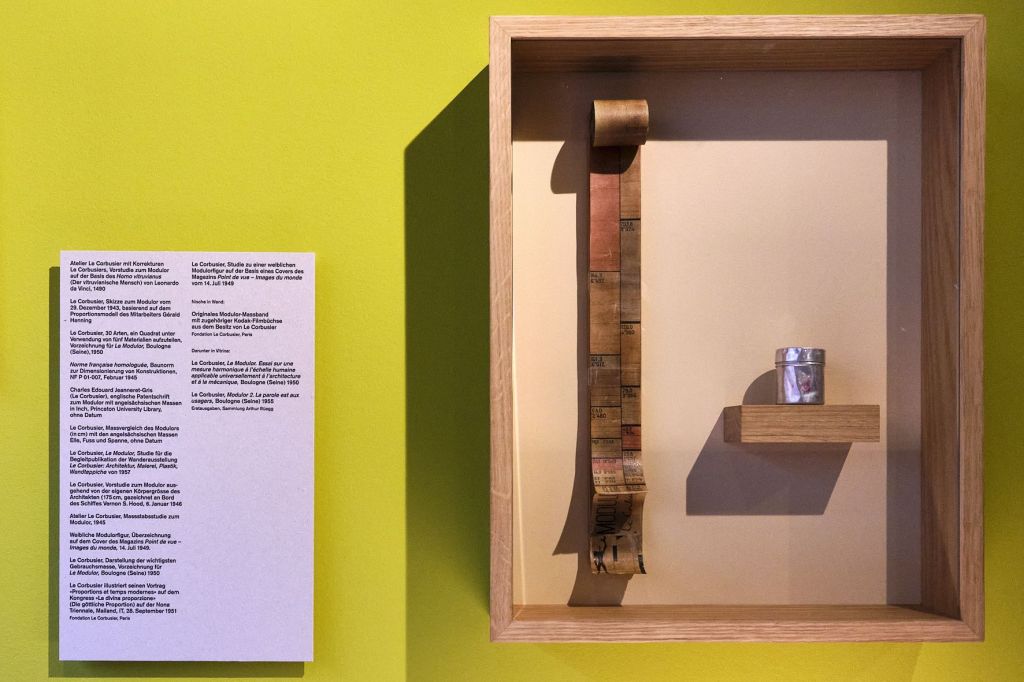
The crux of the matter: the original tape measure that Le Corbusier used to design his projects. Picture: © Werner Mäder, Uetikon
The exhibition “The Modulor” illustrates his passionate research, showing models from nature such as snail shells or minerals, but also points of reference from art history from the Gothic period to the present day. The culmination of this search is the development and application of the legendary Modulor, which combines the human scale with the golden section. Le Corbusier perfected the programmatic Modulor figure and its geometric derivation in countless versions. With the help of his series of measurements, he realised spectacular designs in commercial graphics, furniture design, urban planning and architecture – including the Zurich Pavilion, which is integrally proportioned with the Modulor.
Nature as inspiration
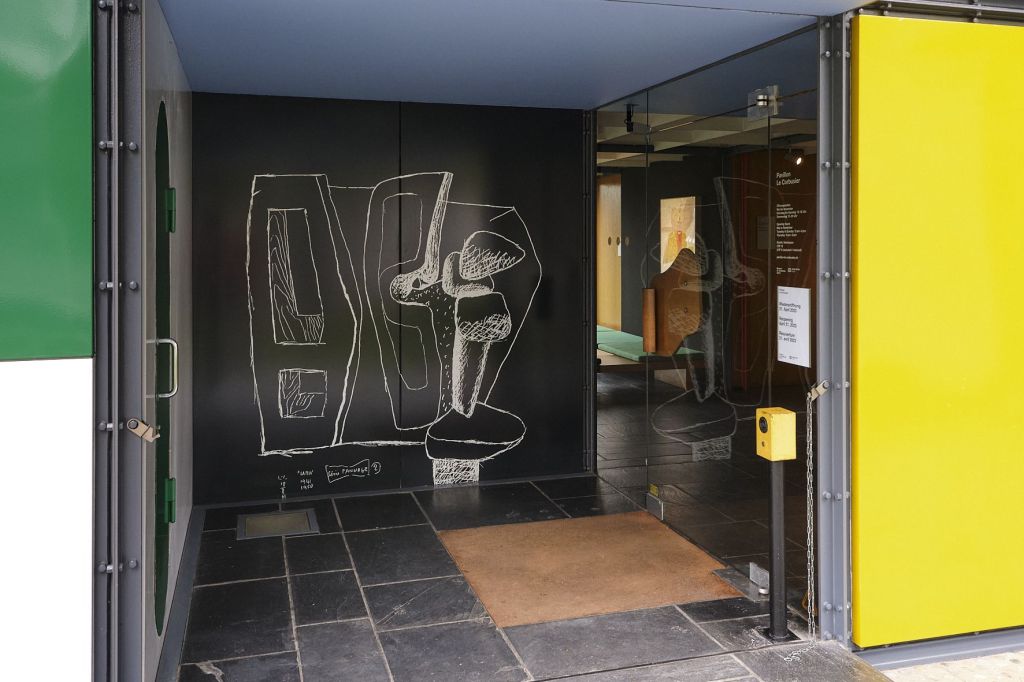
Le Corbusier was not only an architect and designer. A an artist he began to harmonise his paintings and buildings with the help of simple geometric or arithmetic means. Here you see one of his works in the entrance area of the Zurich Pavilion. Picture: © Werner Mäder, Uetikon
While still at school, the young Le Corbusier began to study the laws of growth in nature: His teacher Charles L’Éplattenier said: “Seule la nature est inspiratrice”. The enthusiasm for the forms and structural laws of nature would permeate Le Corbusier’s entire oeuvre. In 1939, for example, the spiral of a snail shell provided the starting point for his project for an “indefinitely growing museum”.
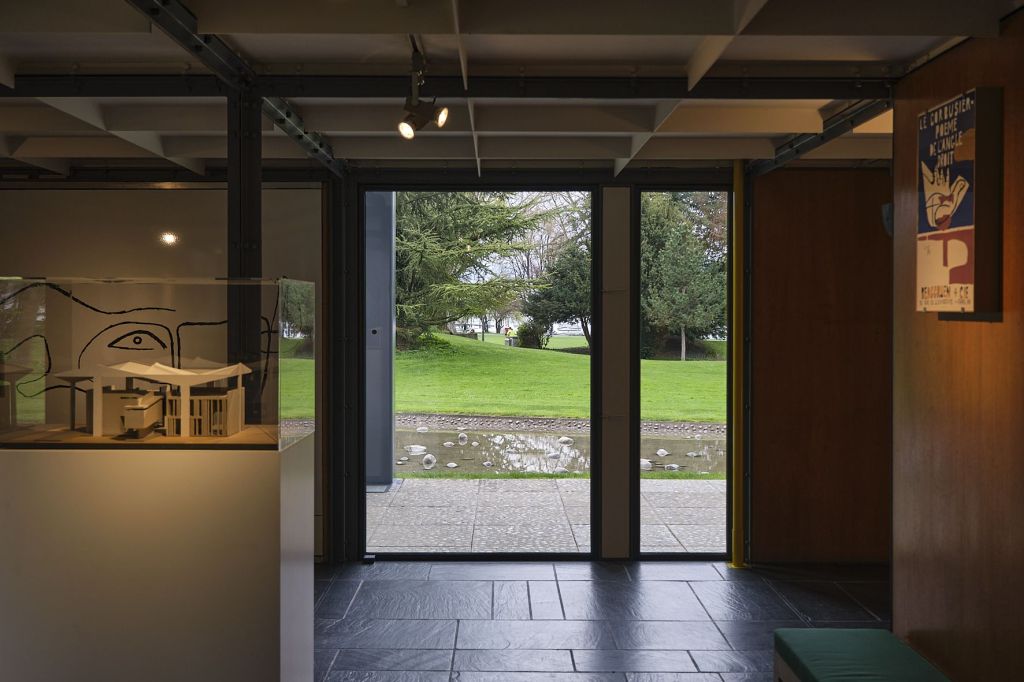
View from the pavilion with model of the building. Picture: © Werner Mäder, Uetikon
As an architect and artist, Le Corbusier also began to harmonise his paintings and buildings with the help of simple geometric or arithmetic means. The diagonals of the planes and their right angles become an invisible framework on which he aligns his compositions – the “tracé régulateur” allows “a very great precision in proportioning” and serves as a tool for clarifying the design intentions.
The Modulor – from seating furniture to urban design
In view of the hoped-for end of the Second World War and the associated reconstruction, Le Corbusier developed his own system of proportions between 1943 and 1945. He succeeds in placing the proportions of the human being and the Golden Section in a geometric relationship and deriving from them two progressions with masses that complement each other and that contain all the dimensions of the human body that are important for the design. By setting the height of the Modulor figure at six feet, he overcomes the incompatibility of the metric measure and the Anglo-American foot measure, thus making his theory of proportion a universally applicable tool.
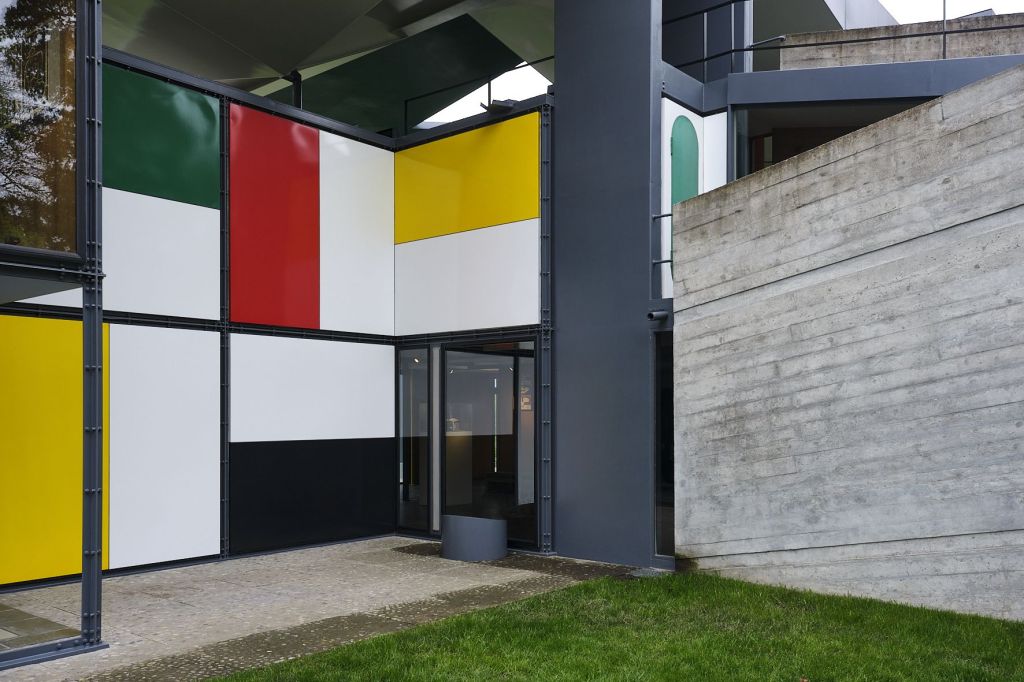
The building as part of the exhibition shows the consistent application of the Modulor. Picture: © Werner Mäder, Uetikon
Le Corbusier used the Modulor consistently in all his buildings from 1946 onwards: For example, for the façades of the Duval factory in Saint-Dié or the La Tourette monastery; he even developed the floor plan of the Indian capital Chandigarh in modular dimensions. It is above all on a smaller scale that Modulor unfolds its full potential, for example in Corbusier’s legendary “Cabanon” holiday home on the Mediterranean or its interior design.
The main exhibit: the pavilion itself
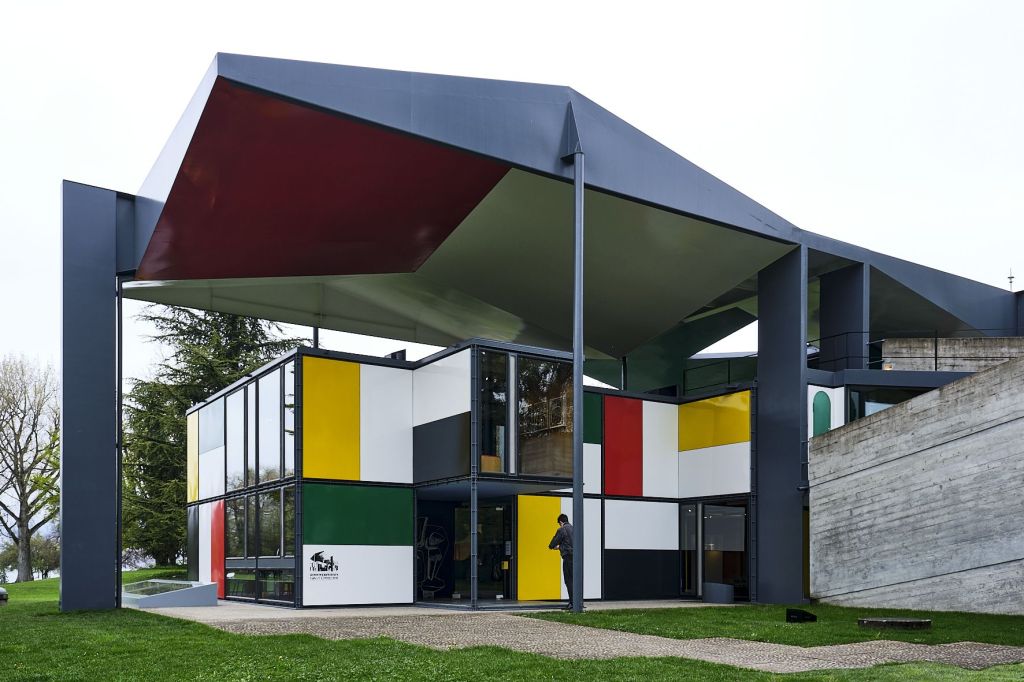
The Le Corbusier Pavilion is itself an important part of the exhibition. Picture: © Werner Mäder, Uetikon
Since its opening in 1967, the Pavillon Le Corbusier has been operated as an exhibition venue to communicate Le Corbusier’s work and ideas to a broad public. Visitors can walk through and discover the pavilion on their own. On around 600 square metres and over four floors, the pavilion offers different insights and views. The small roof terrace with an unobstructed view of the Zürichhorn and the lake is also accessible.
Publication
Der Modulor: Mass und Proportion / The Modulor: Measure and Proportion (D/E)
Museum für Gestaltung Zürich (Hg.) / Christian Brändle und Arthur Rüegg
Available in the museum shops and in the eShop (CHF 10)
Events
All the latest details regarding guided tours, workshops, talks and concerts, as well as the safety rules to be followed, can be found on the website.
Opening hours
Tuesday to Sunday 12-18 h, Thursday 12-20 h (Opening hours on public holidays)

